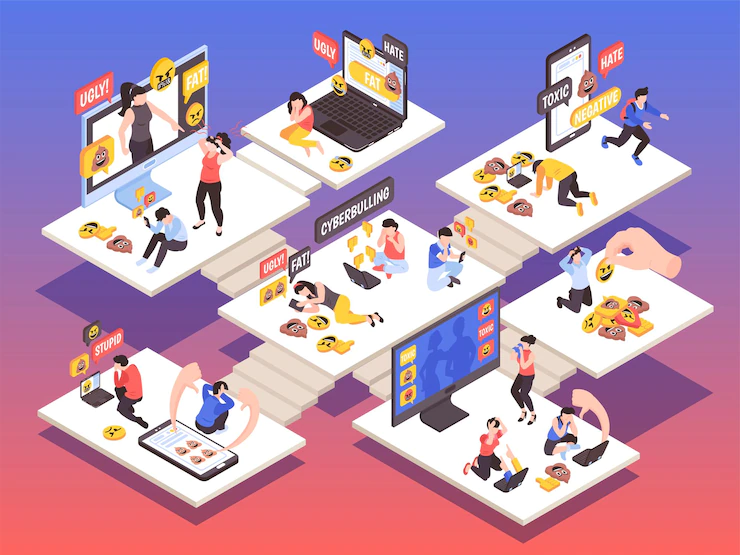A small guide and some useful tips to minimise the risks of a little-known but increasingly widespread form of gender-based violence
Cyber-violence, i.e. the digital dimension of violence that mainly affects women and is closely linked to the violence that occurs in the 'real world', is a growing phenomenon that is often neither recognised nor addressed.
While it is true that several institutions have started to deal with it specifically, it is also true that people who suffer it often lack awareness of the phenomenon, do not know how to recognise it, how to prevent it, how to get rid of it or who to turn to for help and support.
How to try to recognise cyber-violence
Several short guides for tracing the warning signs or risk indicators that can be traced back to various forms of digital violence have been produced first and foremost from the accounts that women who have experienced it have given to the operators of anti-violence centres. Perhaps the most comprehensive in circulation in Italy was put together as part of DeStalk, a European project supported by the European Commission's civil rights programme.
Of course, it should be kept in mind that the different warning signs are only symptoms of possible ongoing cyber-violence, they are not definitive proof of it. They are signals that in most cases do not occur separately, but in combination with each other and often already within a relationship in which other forms of violence are also taking place. Signs or risk factors can, however, provide an indication, raise suspicions that if properly addressed can defuse this specific dimension of abuse.
Some specific cyber-violence practices include accessing communications or data recorded online, on the cloud, without the consent of the owner, remotely controlling webcams and using smart devices, including home voice assistants, connected home appliances and security systems connected to WiFi networks and smartphones. They may involve surveillance and tracking through the use of, for instance, GPS apps, include access to accounts or devices through the use of passwords that the abused person has shared with the abuser, whether willingly or not.
And finally, they include 'stalkerware', i.e. software, apps and other tools that allow one to secretly spy on another person's private life through their devices.
The suspicion that stalkerware may have been installed may arise from various signs: one's own mobile phone, tablet or computer may have disappeared for a period of time and suddenly reappeared, these same devices may be available to one's partner, or one's partner may have given new ones as a gift. It should be kept in mind that the battery of the mobile phone does not drain faster than before or that it consumes more mobile data than before (this consumption depends on the fact that information is sent to the person monitoring the phone). Or an application icon may appear on your device that you do not recognise.
If certain apps have location or camera and microphone access permissions, even if these permissions were not initially granted, apps may have been installed that share information. Access without consent can then also occur if one has changed the mobile phone without deleting data from the old one: the partner may have access to the old mobile phone, the data it contains and to one's app, e-mail and social accounts, among other things.
One risk factor could be the absence of a security lock, a simple password that is always the same for various devices or accounts. If WhatsApp or Telegram have been installed on computers or tablets that are also accessible to other people, and if passwords for social or other accounts have been shared, monitoring and hacking become even easier. Finally, if the partner has access to banking credentials, he can check movements or authorise money transfers.
There are also other things to pay attention to. If the other person has access to our Google account, they can track the location of the mobile phone, as well as check the location history (via the Google Maps history, if this is activated on the device). And if there are smart devices in the house such as Alexa, Google Home, these could be modified to listen to conversations remotely.
Other warning signs concern the behaviour of the battering partner.
Does he/she know information that was not discussed or shared with him/her? Does he/she quote parts of messages or telephone conversations that were with other people? Has he/she been spotted in places one does not normally go and had his/her whereabouts not been shared with him/her? Has he stopped asking to look at our phone or get passwords, whereas he used to do so regularly? He may have control over our mobile phone, our car or have access to our accounts. Finally: does he want to have sexual intercourse always in the same place in the room and with particular conditions? There could be video recording devices hidden in the room.
What to do and what not to do
Cyber-violence can also take place through other channels besides stalkerware. If this is the mode, to minimise risks, and this applies in general, one should choose complex and unique passwords (in addition to using two-factor authentication where applicable), and which should not be shared even with family members. Unlocking with fingerprint or facial recognition should also be avoided because these are technologies that can be circumvented, installed applications should be checked at regular intervals and those that are not used should be removed.

One can then block the installation of third-party applications on Android devices, and reliable solutions can be used to detect stalkerware.
In most cases, the installation of stalkerware requires that someone has physical access to the device and is able to unlock it. It is therefore important that the device is set to lock itself quickly when not in use. This naturally also prevents third parties from being able to read private messages simply by opening the phone.
Here is a list with twelve simple security and privacy tips from the non-profit organisation based in the US District of Columbia and called the National Network to End Domestic Violence.
Once it is certain that stalkerware has been installed, removing it is not a good idea. Attempts to detect stalkerware may be seen by the stalker, and some prevent removal, others notify the stalker if it is removed. Deleting stalkerware, scanning one's device, installing security software and changing any settings on one's phone could therefore, by directly alerting the stalker, increase the risk for the victim and lead to a worsening of the situation.
Furthermore, there is a risk of deleting important data or evidence that could be used in a possible court case: removing the stalkerware could remove evidence of its presence and proof of the abuse suffered.
If there is a suspicion of being a victim of cyber-stalking, one must then find a way to inform oneself or seek contacts about available resources in one's area in a safe manner: if in fact someone is really monitoring the device one is using, that person will also be able to view any online searches for help and resources. Therefore, another device should be used, one to which that person does not have access. Since stalkerware often includes the ability to track a user's browser history and location, urging the victim to go to the police or visit a particular help centre is not always a good idea, or the first thing to do.
For all these reasons, it is important to proceed with extreme caution, and above all, not to act independently. The first step is to contact the nearest anti-violence centre.
You can then turn, even just to ask questions, to the Coalition against Stalkerware, an international group of organisations working with victims and abusers, digital activists and providers of cyber security solutions.
Images from Freepick

